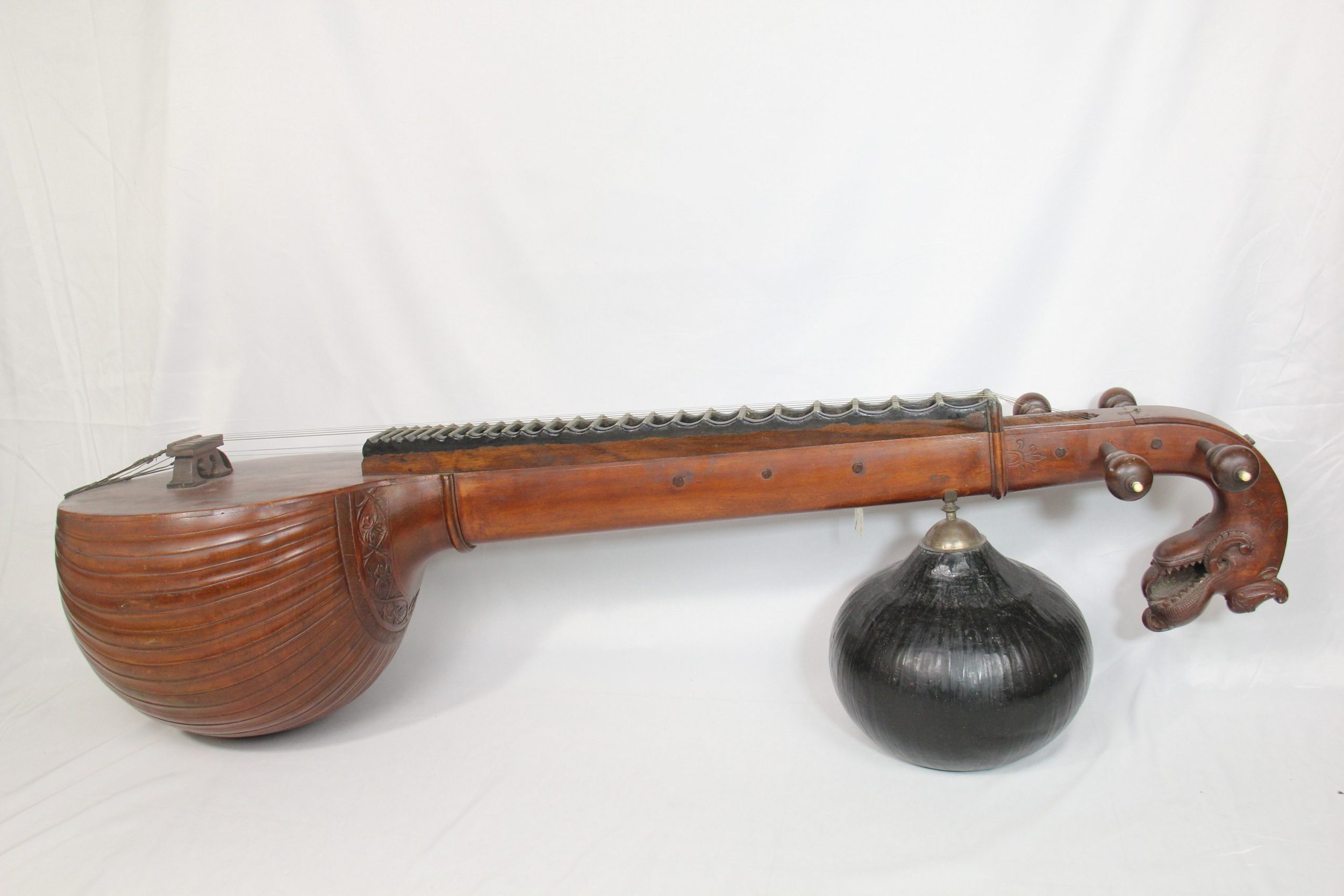Uttanasana – the prefix Ut indicates intensity and severity. The verb tana indicates spreading, elongating or stretching. This is a forward bending posture that intensely stretches the spine.
We gauge the suppleness if the body by the mobility of the spine. The condition of the spine determines not only our physical well-being, but also our life force and physical strength.
In this chapter, Mr. Iyengar compares our spines to a musical instrument called a Veena. See the picture below.
Our brain and spinal cord are said to be like the veena. The brain is the gourd at the upper end and the spinal column is the hollow stem of the instrument. The nerve fibers emanating from the brain are the strings and the spinal vertebrae are the frets. The strumming of these strings is accomplished by breathing.
If the gourds are not well shaped and devoid of perforations, if the frets are defective, if the pegs are not correctly tightened, or if the strings have slipped, then even the most skilled artist will not be able to produce good music from the instrument. In order to produce superior sound, every part must be in impeccable condition. The strings, especially have to be properly stretched.
Our physical Veena needs to be maintained just like the musical one. The nerve strings must be lovingly nurtured and firmly stretched at all times so that they resonate at every level: physical, mental, moral, intellectual and spiritual. This is what Mr. Iyengar aims to teach us through the study of Uttanasana (Standing Forward Bend)
As in Parsvottanasana, there is a concave stage to this standing forward bend. The importance of this stage is that the hinging action comes from the hips and the torso is able to extend downwards without contracting the front, back or sides of the trunk.
Initially, if one is stiff, this concave stage is difficult and it is important to rest the hands on a height in order to achieve it. Most people hunch over out of habit causing the back to become convex while bending forward. One must consciously attempt to make the back muscles concave.
There are several points to keep in mind as one bends forward in Uttanasana.
- Bend at the top of the thighs (hips) not the waist
- Keep the front back and sides of the body even
- Keep the kneecaps lifted and the tops of the thighs pressing back
- If you are stiffer, take the feet wider
- If the hands don’t touch the floor, place them on a height
- Once the hands touch the floor, shift the weight forward into the toes so that the hips and heels are in one vertical line.
- Keep the skin on the soles of the feet spreading and do not grip the toes. If the skin on the bottoms of the feet contract and the toes grip, you will feel this in your lower back
A lot of students have difficulty folding forward. This is often due to prolonged sitting which causes the spine to collapse and the back muscles to become rigid. This gives rise to the various problems such as lower back ache, stiffness in the upper back and neck, excessive thoracic kyphosis (hunched upper back, etc. When such ailments make it difficult to fold forward by bending at the hips, it is important to try the supported variations shown in figures 7 & 8 (from the pages of the book).
The forward bending action, which was an intrinsic part of life in ancient times now needs to be consciously learned through Uttanasana. There are many other fine points to be learned about this posture in Arogya Yoga. You can read the pages from this chapter here.



